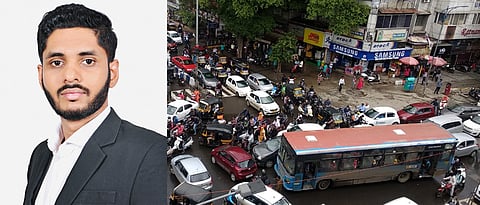

Location technology specialist TomTom has released the results of the TomTom Traffic Index, a report detailing traffic situation in 416 cities in 57 countries. For the first time, Pune has featured in the Index and taken the 5th spot globally with 59 per cent congestion level. Nupur Pradhan spoke to Vinod Poomalai, Strategic Business Development Manager of TomTom, to understand the analysis and how the company is providing solutions.
- What were the parameters taken into consideration and how was it calculated?
We collect anonymous GPS traces from smartphones, car navigation applications etc. We curate this data from almost 600 million devices globally. We analyse all the trips and baseline these trips with uncongested time, which is usually morning 3 am to 4 am. We study the time taken during this period and compare it with regular trips made during the congestion period and compare the results. For Pune, we have covered more than 49 million km of data for this report. During peak hours in Pune, on an average, a trip takes 59 per cent more time to travel. We have looked into traffic from across cities for an entire year and studied the traffic in each city and ranked them as per congestion levels.
- Pune features for the first time in the traffic index. What does it say about the growth of the city?
In general, at a global level, traffic congestion has always been growing. This is also the biggest indicator that cities are growing in terms of their economies. While this is partly good news, it also drags on the productivity of the city. If each of us did not lose 8 days last year in traffic, we would’ve probably achieved more. The worst time to travel in Pune is Friday evening between 7 to 8 pm. If people pre-planned their travel and avoided this time, there could be less congestion.
- Apart from lack of infrastructure, what do you think is driving this trend?
There are multiple reasons for this to happen. More and more private vehicles are plying on the road and the existing infrastructure is creaking to accommodate them. Indian cities are still in the evolving phase. This is a temporary effect due to all the infrastructure-related work. Illegal parking is also a factor. When we studied the data, we figured that rains could be one of the possible reasons as the highest traffic congestion in India happened during the monsoon season.
- As a global group, how is TomTom influencing a solution to vehicle congestion?
TomTom is on a global mission to reduce traffic congestion. We strongly believe in the future ie electric, shared and autonomous. We work with cities in helping them manage their real-time traffic congestion. We have real-time traffic data for every city in India, which helps traffic management officials to find a solution to ease the traffic. We also help cities in planning for the future to get out of the spiral via our wealth of historical data.
The focus in Indian cities is improving metro connectivity, public transit and multi-modal commute. In a city like Bengaluru, there are multiple ways to commute. By connecting information on all these modes, we would be able to solve the last mile connectivity issues that we have which would go in a long way to push people to use public transport more often.
We have signed an MoU with the Pune Smart City where we have been helping them with real-time traffic data for traffic management and historical traffic data for future planning. We also help with live traffic data on variable message boards across the city for citizens to be aware of real-time traffic.
